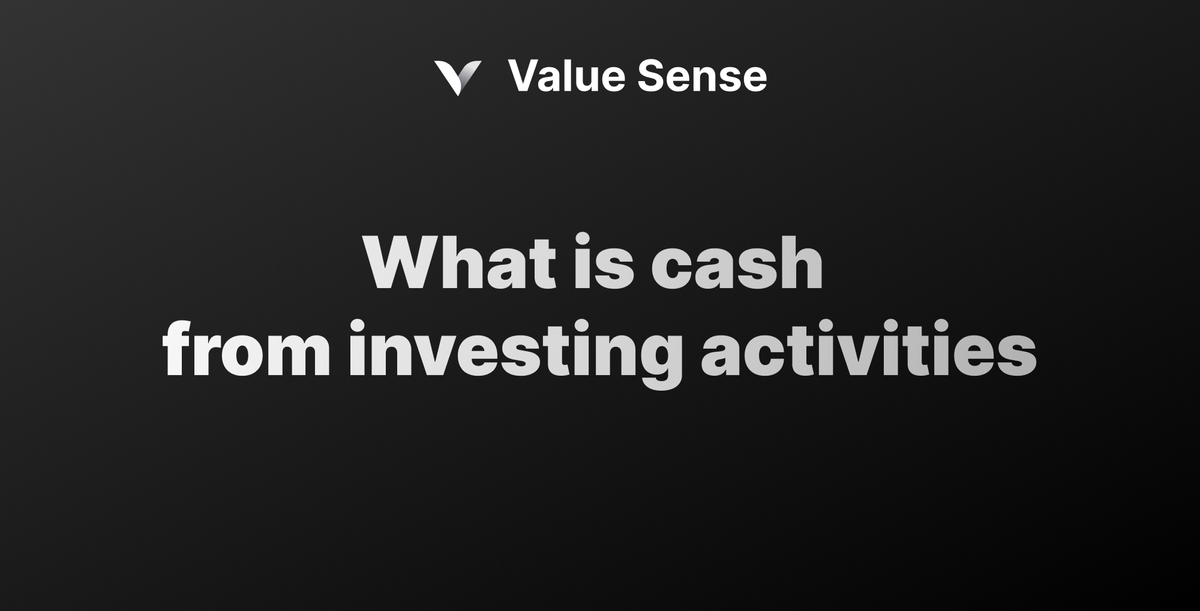What is Cash from Investing Activities

Cash flow from investing activities is a key component of the cash flow statement that offers insights into how a company is investing its capital. It reflects the cash used for investments and the cash received from sales of investments. This section is vital for understanding a company's long-term growth and financial health.
1. What is Cash from Investing Activities?
Cash flow from investing activities shows the cash spent on and received from investments over a specific period. It focuses on long-term assets like property, plant, and equipment (PP&E), acquisitions, and marketable securities (e.g., stocks and bonds).
Investing activities include:
- Purchases of long-term assets like land, buildings, and machinery.
- Acquisitions of other businesses.
- Investments in marketable securities.
2. Capital Expenditures
Companies often spend large amounts on capital expenditures (capex), which include buying property, equipment, or other long-term assets necessary for business operations. Capex falls into two categories:
- Maintenance Capex: This refers to spending required to maintain current operations. For instance, replacing outdated machinery falls under this.
- Growth Capex: This involves spending aimed at expanding the business, such as purchasing additional equipment to increase production.
3. Business Acquisitions and Divestitures
Companies may acquire or sell businesses, significantly impacting their investing cash flows. For example, Microsoft's acquisition of Activision Blizzard in 2023 for $68.7 billion was recorded as a cash outflow, while selling a business would reflect a cash inflow.
4. Investments in Securities
Corporations often buy or sell securities as part of their investment strategy. Purchasing shares or bonds are shown as a negative number (cash outflow), while selling them or receiving returns (e.g., matured bonds) is a positive number (cash inflow).
5. Real-World Example: Nike
Nike’s 2023 cash flow statement shows several investing activities:
- Purchase of Short-term Investments: $6 billion.
- Maturities of Short-term Investments: $3.3 billion.
- Sales of Short-term Investments: $4 billion.
- Capital Expenditure: $969 million.
- Net Cash Flow: $564 million in inflows from investing activities.
6. Importance of Capital Expenditure
Capital expenditure is critical because it's used to calculate free cash flow (FCF), an important metric in valuing companies. Free cash flow is operating cash flow minus capital expenditure. For Nike, the FCF in 2023 was $4.87 billion, which they can use for dividends, acquisitions, or debt repayment.
Conclusion
Investing activities provide essential information about how a company is allocating its resources for future growth. Whether through capex, acquisitions, or investments in securities, these activities directly affect a company’s long-term viability and financial flexibility.
